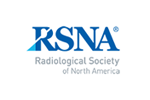Acute Respiratory Illness in Immunocompetent Patients
Acute respiratory illness (ARI) is one of the most common reasons for individuals to seek medical treatment. A person with ARI will have one or more of the following symptoms: cough, phlegm production, chest pain, or trouble breathing. Most cases of ARI are caused by infection that will clear up without treatment. ARI cases caused by bacterial pneumonia require treatment. Imaging is used to determine if there is pneumonia.
A chest x-ray is usually the initial imaging test used for a person with a healthy immune system and no other risk factors.
In individuals with other risk factors, such as abnormal vital signs, a chest x-ray is usually appropriate. Chest ultrasound may be appropriate. If the initial chest x-ray is negative or inconclusive, chest CT without intravenous (IV) contrast is usually appropriate as the next imaging test. In a person with pneumonia and suspected abscess or fluid around the lung on the chest x-ray, chest CT either with or without IV contrast is usually appropriate.
In individuals with acute worsening asthma and no suspected pneumonia or pneumothorax (air around the lung), a chest x-ray may be appropriate. If pneumonia or pneumothorax is suspected, then a chest x-ray is usually appropriate.
In individuals with acute worsening of chronic obstructive pulmonary disease, a chest x-ray is usually appropriate for the initial imaging. Chest CT with or without IV contrast may be appropriate. In people who have symptoms such as chest pain or a history of heart disease, an ultrasound examination may be appropriate.
For more information, see the Pneumonia page.
This page was reviewed on December 15, 2021



